Regenerative gardening is an approach to making your outdoor space more eco-friendly, self-reliant, and harmonious. It invites pollinators with open arms, stores water from a rainy day for a sunny one, restores the world of soil beneath our feet, and creates a friendly space for bugs and humans alike. Here are my go-to practices to begin your own regenerative garden!
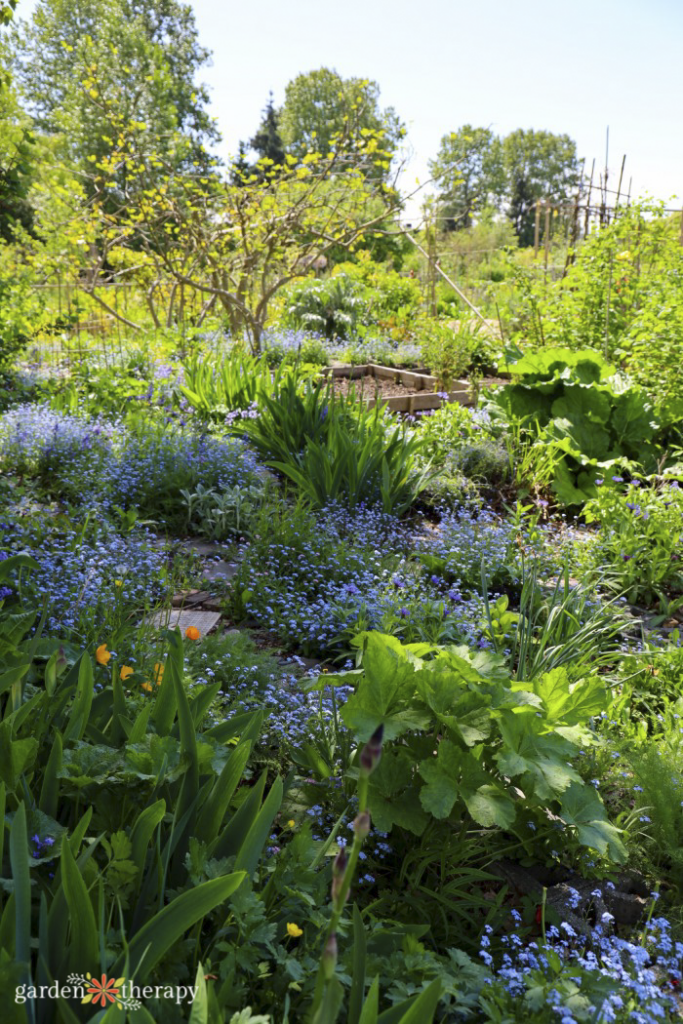
It took me many years to figure out what my approach to gardening was. For the longest time, I referred to myself as an organic gardener. I believed in avoiding all kinds of substances like herbicides and even fertilizer, instead opting to feed and maintain my garden in a natural way.
But then I took it one step further and begin to realize that organic gardening just didn’t cover it all. I’ve studied many polyculture practices and began to employ those in my garden. So much of polyculture is difficult to grasp and I wanted to share more straightforward and practical methods for the everyday gardener.
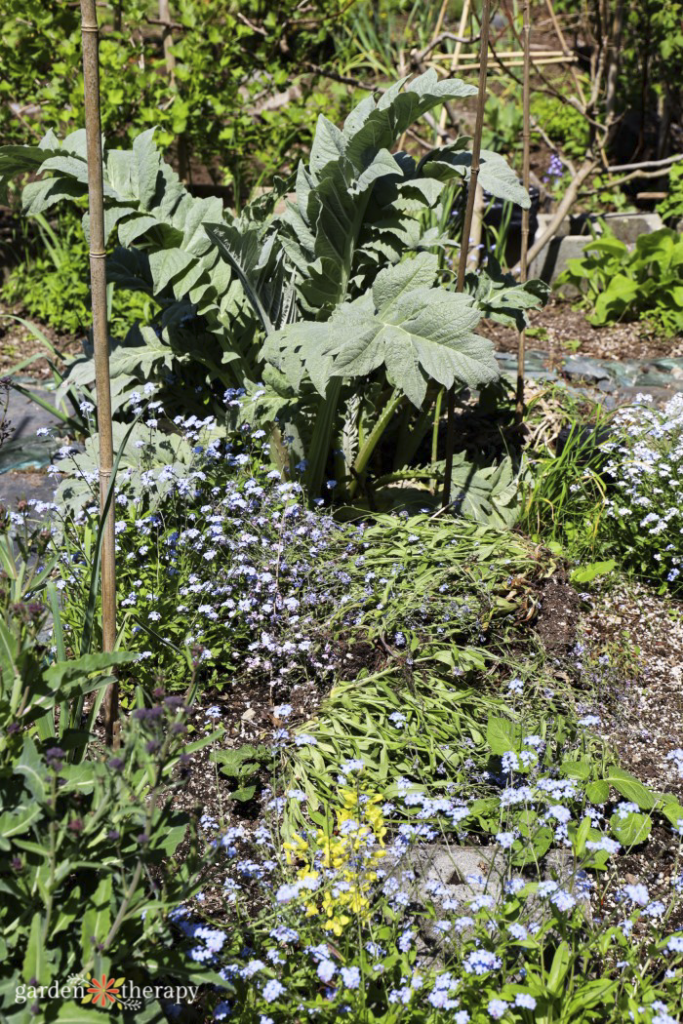
This is where regenerative gardening steps in. Regenerative gardening is a combination of organic, sustainable, and polyculture practices. It believes that the garden is part of a larger ecosystem, that natural methods are best, and that we need to work with what’s already there rather than changing it to suit present gardening trends.
Nearly everything I talk about in Garden Therapy applies to regenerative gardening. To get you started on your own regenerative gardening transformation, I’ve compiled some of the best practices as a stepping stone.
Jump ahead to…
- Starting With Soil
- Soil Regeneration
- Compost Recipe
- Garden Amendments
- Vermicomposting
- No-Till Gardening
- Water Wisely
- Rain Gardens
- Self-Watering Planters
- Water Conservation
- Mindful Watering
- Plants, Plants, Plants
- Garden Weeds
- Food Forests
- Pathway Butterfly Gardens
- Companion Planting
- Sustainable Gardening
- Climate
- Changing Microclimates
- Mini Greenhouses
- Sun Mapping
- Heat-Tolerant Plants
- Xeriscaping
- Wildlife and Community
- Fostering a Gardening Community
- Bee-Friendly Gardens
- Natural Pest Control
- Little Seed Library
- Urban Flower Stand

In my recent book, The Regenerative Garden, I created an entire guide aimed at building a regenerative garden. I cover not only the principles of regenerative gardening but actionable projects you can employ in your garden. So, if you want to take a further deep dive into the subject, be sure to check it out as the ultimate how-to on regenerative gardening.
Starting With Soil
Regenerative gardening all starts with what lies below our feet. When you don’t have good soil, you’re not going to be able to grow a successful garden.
Yes, even if you fertilize.
There’s a lot you can do to help build up soil over time, to ensure that your plants thrive naturally. Here are a few ways you can work from the ground up.
Soil Regeneration
No matter how good your soil is, you’ll need to work on soil regeneration. This is when you both allow the ground to do what it naturally does best while helping it along the way.
There are many ways you can begin soil regeneration in your garden but I’ll give you a hint…compost!
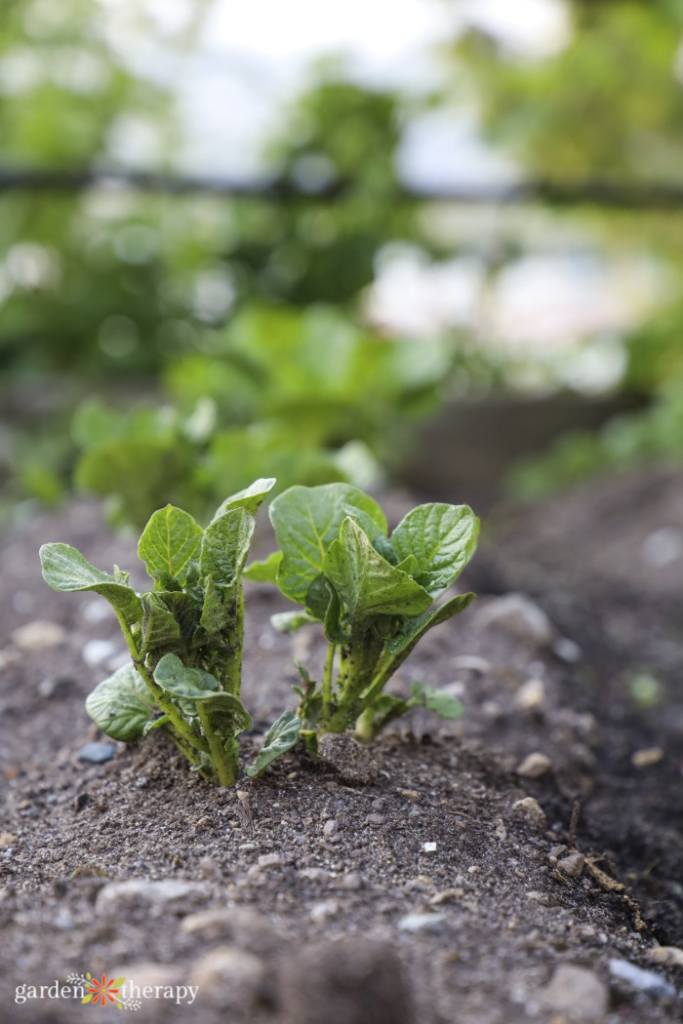
Compost Recipe
Compost is much more than piling a bunch of kitchen and garden scraps in a pile. To get rich and fluffy compost, you need four key ingredients: greens, browns, moisture, and air.
Done right, you can have a steady supply of compost in as little as 4-6 weeks. This stuff is practically garden gold for getting your garden to grow stronger and quicker.

Garden Amendments
Amendments adjust a soil’s pH, structure, and nutrients. If your soil isn’t doing the trick, you’ll want to start integrating amendments to get it back on track.
While compost is my go-to garden amendment, there are a few other amendments you can find for free or dirt cheap, like manure and leaves.
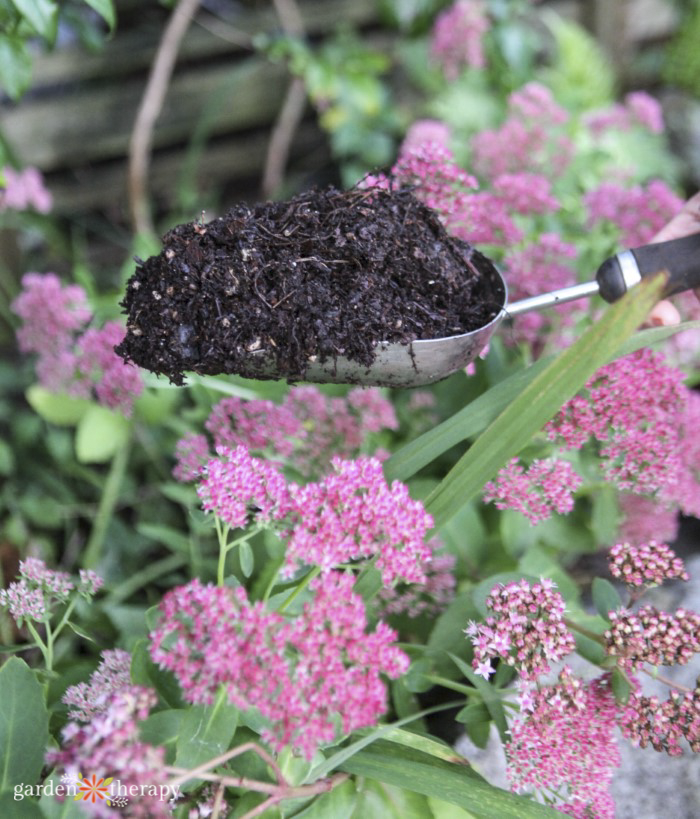
Vermicomposting
Another form of compost, vermicomposting involves worms! This is great for those who want to start regenerative gardening with limited space for a compost bin or want to keep things covered.
Through vermicomposting, you get worm castings (AKA worm poop) which are excellent at holding moisture and packed with nutrients.
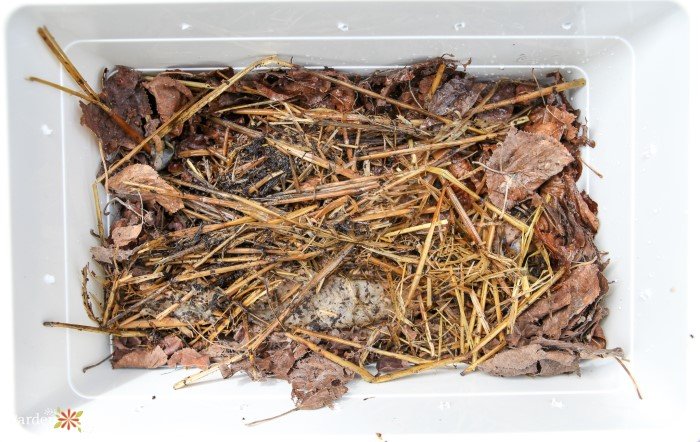
No-Till Gardening
Soil loves to be left alone. Really! The more we dig, the more we interfere with the microbes living beneath the soil. We’re basically like Godzilla coming down and destroying their city every time we dig.
Instead, begin practicing no-till gardening which embraces a less invasive approach to planting.
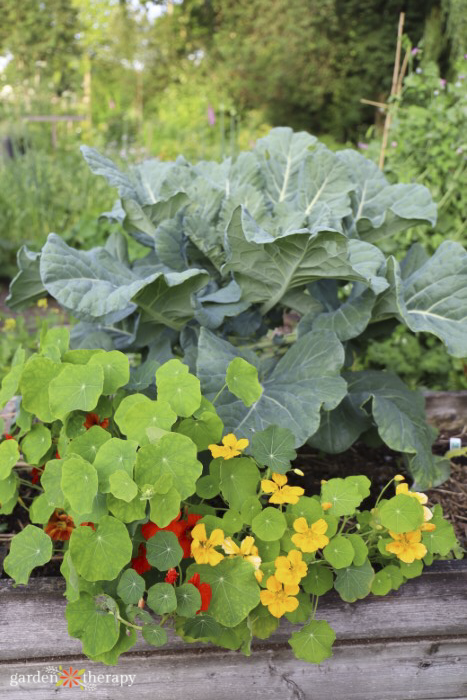
Water Wisely
The same drops of water we use to hydrate our plants are the same drops of water used on wild plants millions of years ago. There has long been a water cycle that existed without human interference.
But now, humans have messed up the natural cycle of water in our communities and gardens. In a regenerative garden, we try to conserve as much water as possible and use it wisely.
Rain Gardens
Why are we redirecting rainwater to the sewer when it can be going to our gardens? Rain gardens are when you direct water runoff to a specifically designed garden to absorb and filter the rainwater. It helps to retain the natural water that would have soaked into the ground and also filter urban runoff.
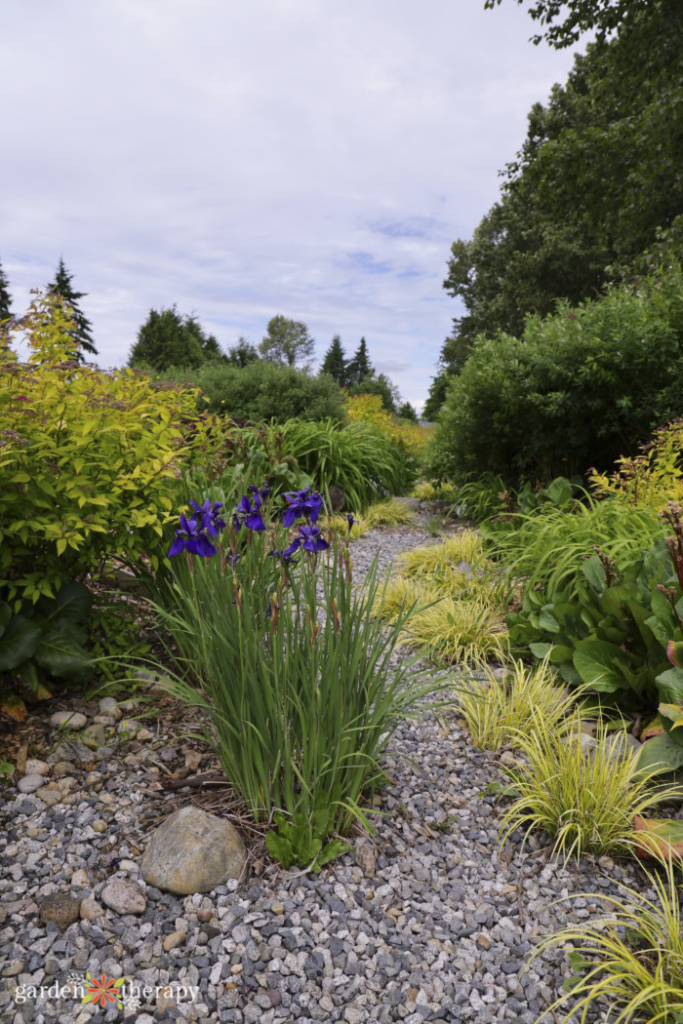
Self-Watering Planters
Self-watering planters are a cleverly designed but simple project to take on. They work well for small containers on your porch or houseplants inside. It reduces the frequency in which you need to water, which not only saves water but allows you to take a less active approach in your plant maintenance.
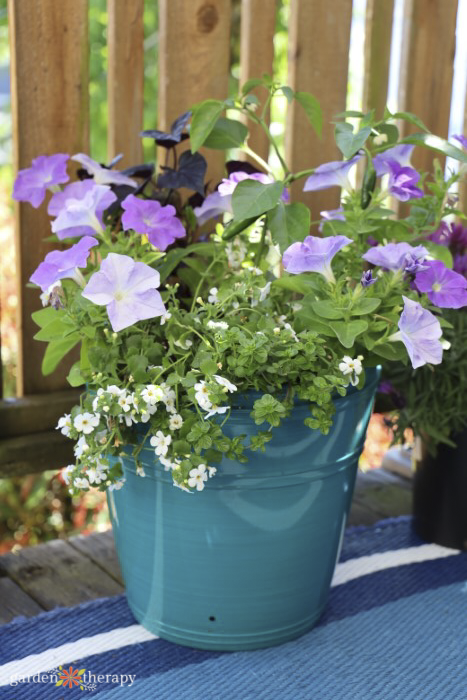
Water Conservation
Periods of drought are becoming more and more common, as are periods of extreme rainfall. To help balance things out, conserve water during periods of rainfall to use when things are dryer. In the home garden, you can employ many different types of water catchment systems like rain barrels or wicking beds.

Mindful Watering
When you do need to grab the hose, you can water in a more mindful way. Not only do you focus on the needs of individual plants, but it also becomes a meditative state for the gardener as well. It relies on deep watering and using smart systems like drip irrigation.
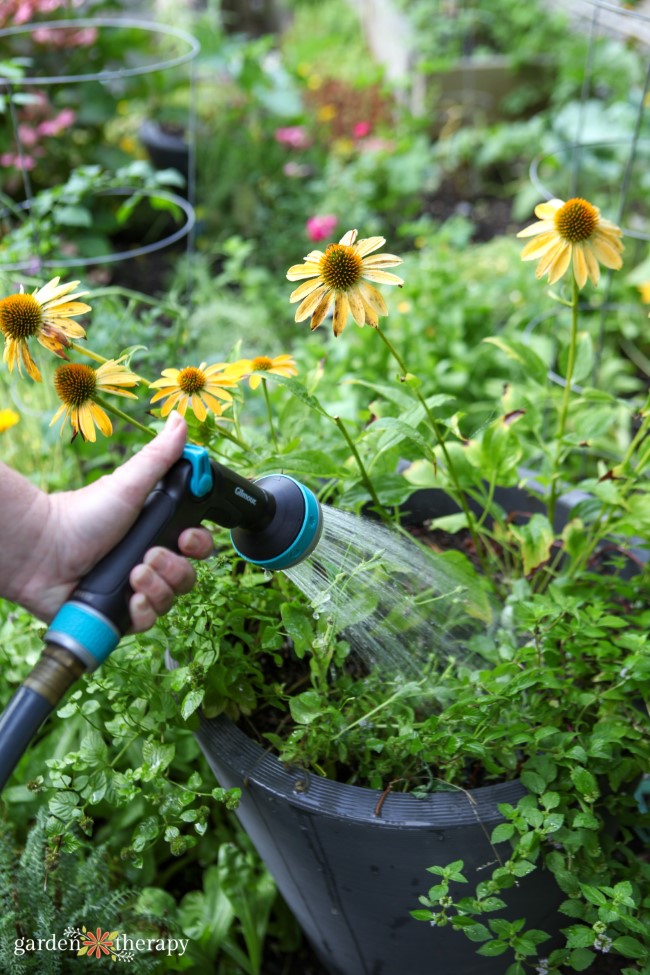
Plants, Plants, Plants
Plants are what all us gardeners get excited about. Over the past decade, I’ve seen gardeners become more and more conscious about the types of plants they add to their gardens.
It’s all about working with your local ecosystem, taking into account your weather conditions, wildlife, native species, and what you love to grow most.
Garden Weeds
A big part of regenerative gardening is challenging the status quo. From dandelion to chickweed, weeds have gotten a bad rap for popping up where they’re not wanted. But really, those weeds exist there for a reason. When weeds pop up in your garden, ask yourself why they’re there and what purpose they serve.
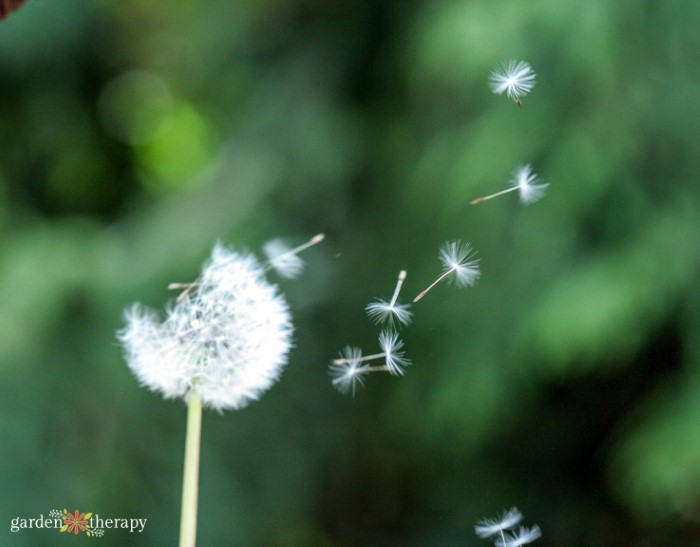
Food Forests
For those who love an edible garden, a backyard food forest is a carefully curated group of edible plants all designed to help one another. Ideally, they mimic a natural forest system and become completely self-sustaining. It’s designed to give you the most amount of food, medicine, and craft materials possible.

Pathway Butterfly Gardens
With changing climates, we need to help those who rely heavily on the seasons for their life cycle. Butterflies need food the second the caterpillars emerge all the way to when it’s time to journey south. Butterfly pathway gardens provide enough food for them every step of the way.
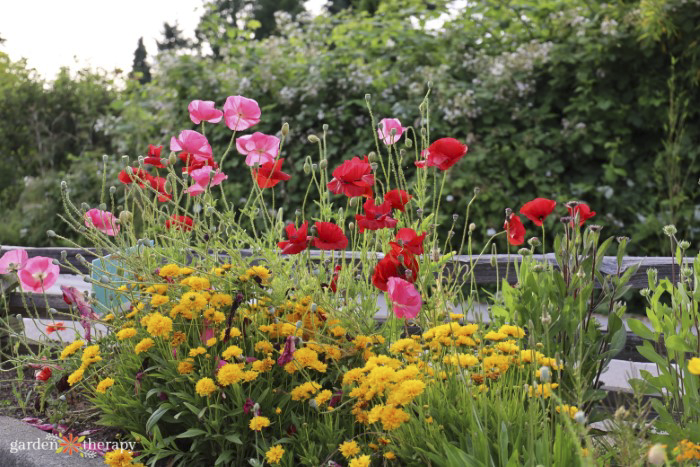
Companion Planting
Our plants can work harder as long as we’re smarter. Companion planting helps to deter unwanted pests from your garden by planting flowers the bugs don’t like. For instance, marigolds spaced amongst your vegetable garden will keep away pests like whiteflies and cabbage worms.
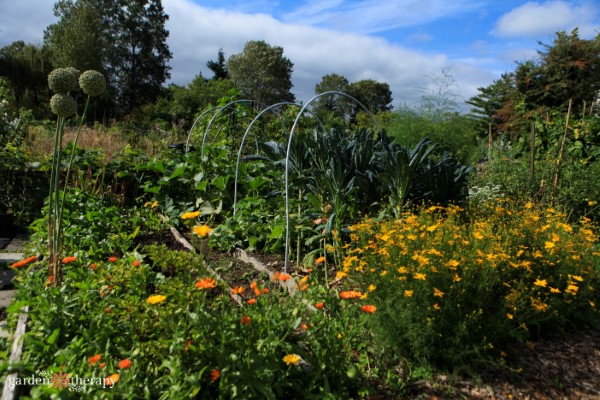
Sustainable Gardening
While similar to regenerative gardening, sustainable gardening is slightly different than regenerative gardening and falls under its umbrella.
It’s all about creating a garden that is better than how you found it. It’s putting the environment above all else and gardening with an eco-conscious mindset.

Climate
Gardeners rely on the weather to know just the right moment to sow a seed or harvest a vegetable. But as climates change, it becomes increasingly difficult to look back on what’s “normal” in order to predict what’s to come.
You can adapt to your unique microclimate to ensure your garden still follows the seasons for a successful season.
Changing Microclimates
Even a twenty-minute drive from your house can have a completely different climate than your own. While you can refer to local gardening chapters for information on your climate and how it relates to gardening, it’s possible to find out information on your own.
By becoming more aware of the surrounding environment and its microclimate, your garden will flourish.

Mini Greenhouses
It’s possible to extend your gardening season, no matter where you live. Yes, really! Greenhouses don’t have to be expensive or big to use. In fact, my mini greenhouse is a clear umbrella. Garden for longer by implementing greenhouses in your garden.
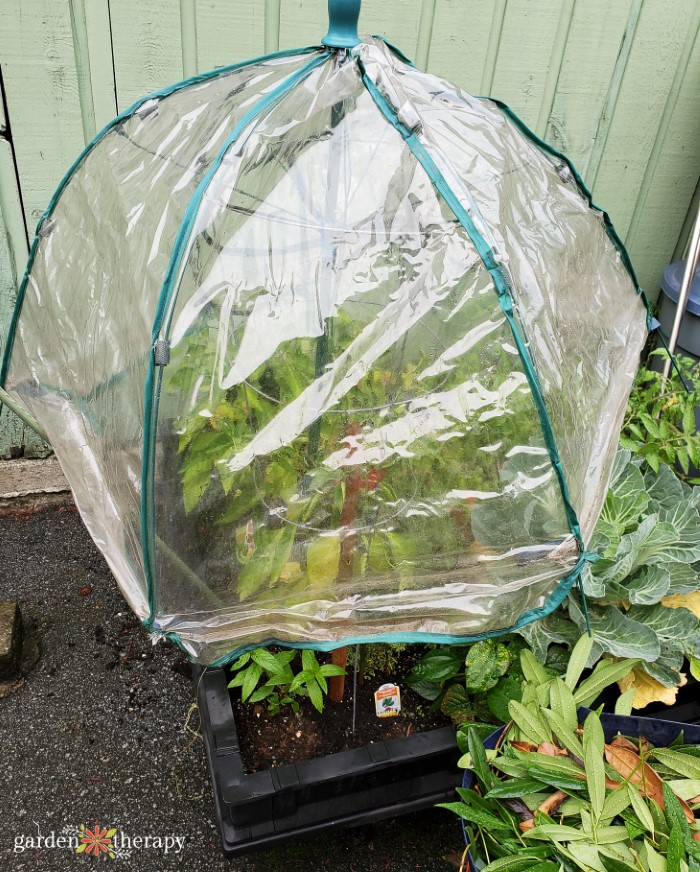
Sun Mapping
Do you know just how much sun your garden gets? You can determine the shady and sunny areas of your garden and how many hours of sunlight to expect by measuring the sunlight through sun mapping. This is an easy task to do that can have huge implications for your garden.
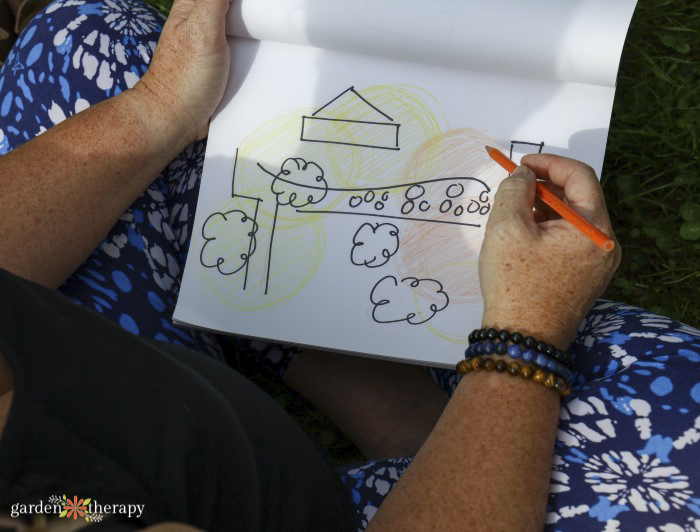
Heat-Tolerant Plants
While we can do our best to protect our plants from heat stress, the even better thing to do is plant flowers and plants that already love the sun. These ornamental plants can be planted in the hottest parts of your garden and withstand the heat with less water.

Xeriscaping
Save yourself time and money by implementing xeriscaping principles into your garden. Through creative landscaping, you can conserve water while your garden requires less maintenance. So when drought does come around, you’re more prepared to keep everything happy and healthy.
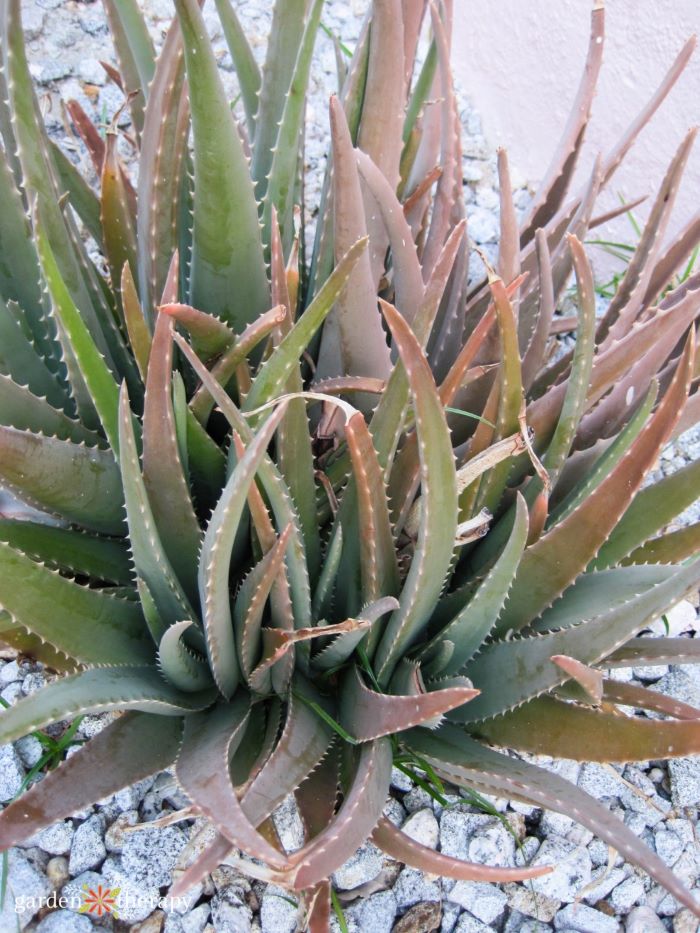
Wildlife and Community
Our gardens are not just for us to enjoy. Whether you’re growing a small urban garden or are in charge of a rural homestead, you’re part of a greater community.
When you have mastered the fundamentals of regenerative gardening, it’s also important to consider how your garden exists in making the environment a better place for wildlife and your local community.
Fostering a Gardening Community
Gardening doesn’t have to be a solitary activity. While you can tend to your flowers in your own time, it’s important to connect with like-minded gardeners to share practices, tips, and the overall love of gardening. From community gardens to your neighbours, there are plenty of ways to inspire and be inspired by others.
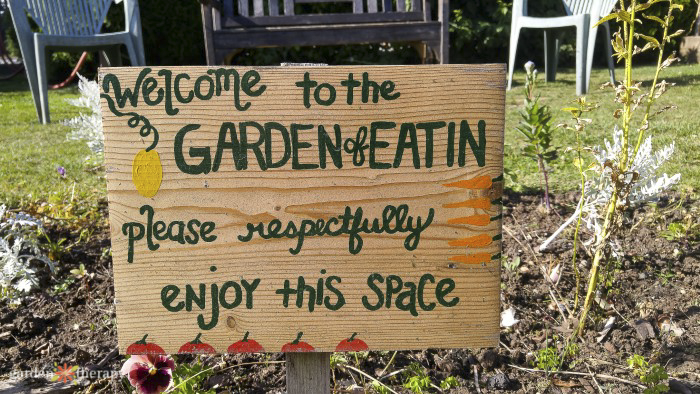
Bee-Friendly Gardens
Bees are one little creature that will always have a home in my garden. To ensure the survival of these crucial pollinators, we need to help them as much as possible in our personal gardens.
Make sure your garden is bee-friendly year-round by planting seasonal flowers, avoiding pesticides, making bee houses, and more.

Natural Pest Control
In the mind of a regenerative gardener, pesticides are never a good idea. Pesticides can affect all bugs, the good and the bad. All pests are a vital part of the ecosystem, and there are more friendly ways to keep them away from your valuable flowers and vegetables by planting strategically.
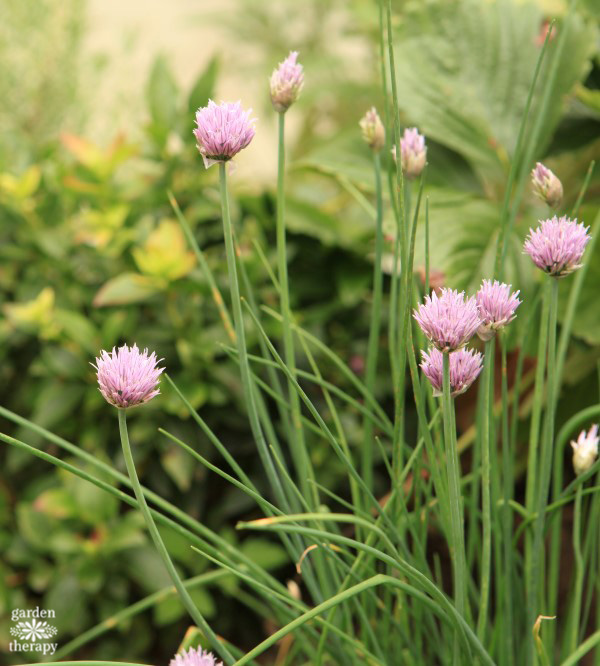
Little Seed Library
Have you ever seen a free little library? Just like these book libraries, seed libraries are small spaces that gardeners can use to share seeds with their neighbours. These seeds can be harvested from their own garden or as packaged extras.
It’s a great way to share resources and information with the local gardening community.
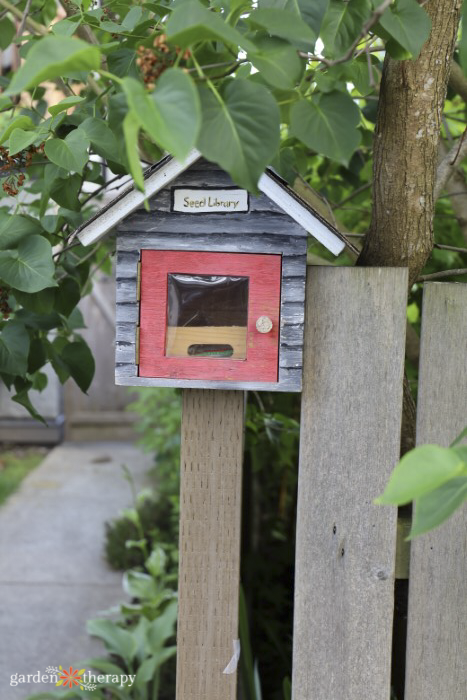
Urban Flower Stand
Nothing brings joy quite like a bouquet of flowers. If your garden is full of colourful flowers, you could start your own flower stand. You can gift your community this simple joy by selling flowers for profit, donation, or for free. It creates a lovely sentiment amongst the community!
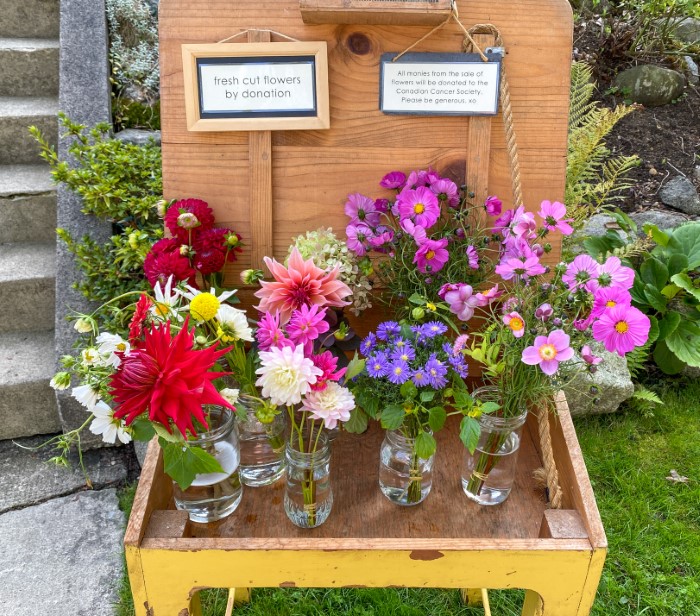
These are just a few ways you can begin regenerative gardening. It’s a different approach to gardening that consists of many different projects, principles, and methods.
For more information, be sure to check out my book, The Regenerative Garden.





Thank you for sharing this information. I always read your posts. I am new to gardening. As we bought a house in France (we’re Dutch) with a large garden, almost 3000 square meters, your experience is very welcome to me.
Thank you for this enormous knowledge and skills 👏
This is fabulous, but have a question. What do you do with all the hearty stems of plants at season’s end. Have learned to cut plants at base so as to hold all the connections and nutrients that the roots have created, but there is a great deal of woody and fibrous material left. What to do with it? Thanks
Many things, leave on the soil as mulch, compost, add to the bottom of planters and garden beds. Great stuff!